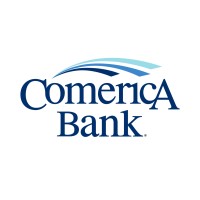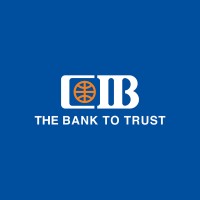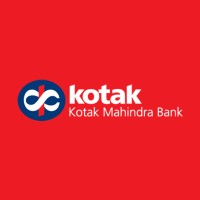
Indian Bank Company Cyber Security Posture
indianbank.inEstablished in 1907, today, we are a family of over 141 million customers and 40000 staff members. With a 100% CBS network of 6000+ branches and 5400+ ATMs and BNAs, Indian Bank has a wide national footprint, besides foreign branches in Singapore and Colombo, along with arrangements with 640 Overseas Correspondent Banks present in 77 countries. We strive continuously to provide the best banking solutions to the people/units from all possible sectors including Corporate, Retail, Institutional, Agriculture, MSME, SHG, and NRIs. Choose from our wide range of products spanning Deposits, Loans, Cards, Wallets, Apps, Insurance, Mutual Funds, Remittances, Forex services and more. For information, visit www.indianbank.in Further, you can send feedback at [email protected]
Indian Bank Company Details
indianbank
14601 employees
60928.0
522
Banking
indianbank.in
Scan still pending
IND_2586131
In-progress
Between 800 and 900
This score is AI-generated and less favored by cyber insurers, who prefer the TPRM score.
 Indian Bank Global Score
Indian Bank Global Score.png)

Indian Bank Company Scoring based on AI Models
| Model Name | Date | Description | Current Score Difference | Score |
|---|---|---|---|---|
| AVERAGE-Industry | 03-12-2025 | This score represents the average cybersecurity rating of companies already scanned within the same industry. It provides a benchmark to compare an individual company's security posture against its industry peers. | N/A | Between 800 and 900 |
Indian Bank Company Cyber Security News & History
| Entity | Type | Severity | Impact | Seen | Url ID | Details | View |
|---|---|---|---|---|---|---|---|
| Indian Bank | Breach | 60 | 4 | 08/2017 | IND11431122 | Link | |
Rankiteo Explanation : Attack with significant impact with customers data leaksDescription: Indian Bank suffered from a data breach incident that exposed customer’s net banking credentials. The compromised information includes name, address, PAN and mobile number. The Central Information Commission (CIC) reprimanded respondent Indian Bank for stalling in the matter and gave the appellant a little gesture of compensation. | |||||||
Indian Bank Company Subsidiaries

Established in 1907, today, we are a family of over 141 million customers and 40000 staff members. With a 100% CBS network of 6000+ branches and 5400+ ATMs and BNAs, Indian Bank has a wide national footprint, besides foreign branches in Singapore and Colombo, along with arrangements with 640 Overseas Correspondent Banks present in 77 countries. We strive continuously to provide the best banking solutions to the people/units from all possible sectors including Corporate, Retail, Institutional, Agriculture, MSME, SHG, and NRIs. Choose from our wide range of products spanning Deposits, Loans, Cards, Wallets, Apps, Insurance, Mutual Funds, Remittances, Forex services and more. For information, visit www.indianbank.in Further, you can send feedback at [email protected]
Access Data Using Our API

Get company history
.png)
Indian Bank Cyber Security News
Indian Bank and IIT-M to hold cybersecurity, fintech hackathon in April
Indian Bank and IIT Madras collaborate for a cyber security and fintech hackathon focusing on fraud prevention and detection.
India's central bank asks lenders to tighten cybersecurity oversight
India's central bank said on Monday its chief has urged banks to tighten their oversight on cybersecurity issues and to have systems in ...
Guarding the Digital Fortress
This modern interpretation is backed by the RBI's master directions, which delineate clear responsibilities for CISOs in India's banking sector.
RBI mandates ‘bank.in’ domain to improve cybersecurity
Introducing the 'bank.in' domain represents a proactive approach to safeguarding digital banking channels.
India’s payments central body launch training programmes for cybersecurity
The two organisations will jointly conduct training programmes for tech and cyber professionals in the banking and digital payment services sector.
Indian Bank and IIT Madras Partner to Conduct Cybersecurity and Fintech Hackathon
Indian Bank has announced a Cyber Security & FinTech hackathon in collaboration with the Indian Institute of Technology (IIT) Madras, ...
Pakistan-based hackers may target Indian banks, social media users: CERT-In alert!
The Indian government has issued a strong warning against the possibility of major cyber attacks targeting the country's financial and critical infrastructure ...
Indian banks reported over 23,000 cybersecurity incidents in 2023: Government to Parliament
The government told Parliament on Wednesday, December 18, that the Indian banking system experienced 23,158 cybersecurity incidents in 2023.
Union Bank of India rolls out hackathon in cybersecurity, GenAI
Union Bank of India's initiative comes as the banking sector accelerates its digital transformation initiatives. It further aligns with the ...

Indian Bank Similar Companies

ANZ
ANZ has a proud heritage of more than 180 years. Our purpose is to shape a world where people and communities thrive. That is why we strive to create a balanced, sustainable economy in which everyone can take part and build a better life. We employ more than 50,000 people and have our global headq

BMO U.S.
At BMO, banking is our personal commitment to helping people at every stage of their financial lives. The truth is, people’s needs change: so we change too. But we never change who we are. Which means we’ll never waiver from providing our customers the best possible banking experience in the indust

Sumitomo Mitsui Trust Bank
Sumitomo Mitsui Trust Bank, Limited (SuMi TRUST) was established through the merger of The Sumitomo Trust and Banking Co., Ltd. with Chuo Mitsui Trust and Banking, Ltd. and Chuo Mitsui Asset Trust and Banking Company, Ltd. on April 1, 2012. SuMi TRUST is Japan's largest trust bank, with AUM of more

Comerica Bank
Comerica Incorporated (NYSE: CMA) is a financial services company headquartered in Dallas, Texas, strategically aligned by the Business Bank, the Retail Bank, and Wealth Management. The Business Bank provides companies of all sizes with an array of credit and non-credit financial products and servic

CIB Egypt
Commercial International Bank was established in 1975 as a joint venture between the National Bank of Egypt (NBE, 51%) and the Chase Manhattan Bank (49%) under the name "Chase National Bank of Egypt”. Following Chase's decision to divest its equity stake in 1987, NBE increased its shareholding to 99

Kotak Mahindra Bank
About Kotak Mahindra Group: Established in 1985, the Kotak Mahindra Group is one of India’s leading financial services conglomerates. In February 2003, Kotak Mahindra Finance Ltd. (KMFL), the Group’s flagship company, received a banking license from the Reserve Bank of India (RBI). With this, KMF

Frequently Asked Questions
Explore insights on cybersecurity incidents, risk posture, and Rankiteo's assessments.
Indian Bank CyberSecurity History Information
How many cyber incidents has Indian Bank faced?
Total Incidents: According to Rankiteo, Indian Bank has faced 1 incident in the past.
What types of cybersecurity incidents have occurred at Indian Bank?
Incident Types: The types of cybersecurity incidents that have occurred incident Breach.
Incident Details
Can you provide details on each incident?

Incident : Data Breach
Title: Data Breach at Indian Bank Exposes Customer Net Banking Credentials
Description: Indian Bank suffered from a data breach incident that exposed customer’s net banking credentials. The compromised information includes name, address, PAN and mobile number. The Central Information Commission (CIC) reprimanded respondent Indian Bank for stalling in the matter and gave the appellant a little gesture of compensation.
Type: Data Breach
What are the most common types of attacks the company has faced?
Common Attack Types: The most common types of attacks the company has faced is Breach.
Impact of the Incidents
What was the impact of each incident?

Incident : Data Breach IND11431122
Data Compromised: name, address, PAN, mobile number
What types of data are most commonly compromised in incidents?
Commonly Compromised Data Types: The types of data most commonly compromised in incidents are name, address, PAN and mobile number.
Which entities were affected by each incident?

Incident : Data Breach IND11431122
Entity Type: Financial Institution
Industry: Banking
Location: India
Data Breach Information
What type of data was compromised in each breach?

Incident : Data Breach IND11431122
Type of Data Compromised: name, address, PAN, mobile number
Sensitivity of Data: High
Personally Identifiable Information: name, address, PAN, mobile number
Additional Questions
Impact of the Incidents
What was the most significant data compromised in an incident?
Most Significant Data Compromised: The most significant data compromised in an incident were name, address, PAN and mobile number.
Data Breach Information
What was the most sensitive data compromised in a breach?
Most Sensitive Data Compromised: The most sensitive data compromised in a breach were name, address, PAN and mobile number.
What Do We Measure?
















Every week, Rankiteo analyzes billions of signals to give organizations a sharper, faster view of emerging risks. With deeper, more actionable intelligence at their fingertips, security teams can outpace threat actors, respond instantly to Zero-Day attacks, and dramatically shrink their risk exposure window.
These are some of the factors we use to calculate the overall score:
Identify exposed access points, detect misconfigured SSL certificates, and uncover vulnerabilities across the network infrastructure.
Gain visibility into the software components used within an organization to detect vulnerabilities, manage risk, and ensure supply chain security.
Monitor and manage all IT assets and their configurations to ensure accurate, real-time visibility across the company's technology environment.
Leverage real-time insights on active threats, malware campaigns, and emerging vulnerabilities to proactively defend against evolving cyberattacks.




